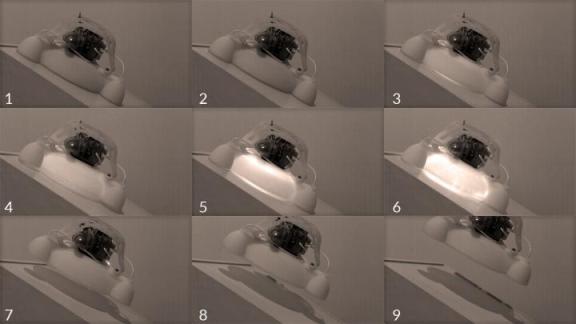Podcast: Play in new window
BOB HIRSHON (host):

Gravity-defying robots. I’m Bob Hirshon and this is Science Update.
Robots typically bring to mind gleaming metal parts. But more adaptable, soft-bodied robots are gradually making their way onto the scene. The biggest challenge has been to design soft surfaces that interface smoothly with the rigid components inside them. Harvard engineer Nick Bartlett and colleagues describe how they tackled the problem in the journal Science.
NICK BARTLETT (Harvard University):
What we came up with is a 3-D printing approach in which we print a material gradient that ranges from very soft to very rigid to connect these dissimilar materials.
HIRSHON:
Their small, round robot is powered by combustion, and can jump as high as 6 feet.
NICK BARTLETT (Harvard University):
The robot essentially balloons out, pressing against the ground, launching itself into the air.
HIRSHON:
It could be used in rescue operations…
BARTLETT:
A building collapse or something, searching for survivors.
HIRSHON:
Or to explore the moon, one hop at a time. I’m Bob Hirshon, for AAAS, the science society.
